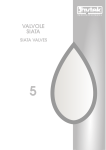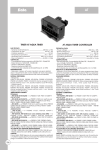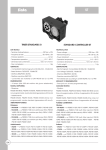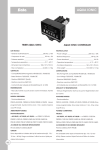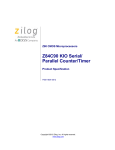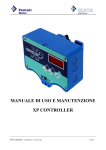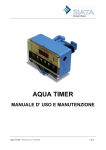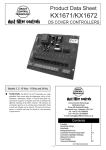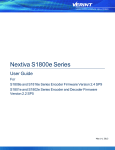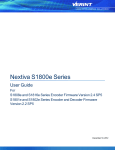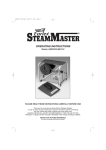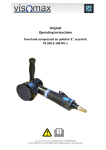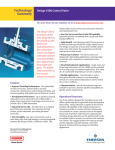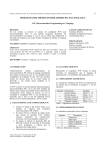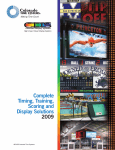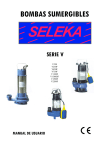Download AQUA CUBIC - HY
Transcript
AQUA CUBIC Siata TIMER AQUA CUBIC AQUA CUBIC CONTROLLER DATI TECNICI - Tensione di alimentazione: ____________________230 Vac ± 10% - Frequenza di rete: __________________________ 50 Hz ± 3% - Potenza assorbita: __________________________________ 4.6 VA - Temperatura operativa: _______________________ 4° C – 40° C - Dimensioni del contenitore: ______________ 165 x 127 x 70 mm - Peso complessivo: __________________________ da 0,8 a 1,5 Kg CERTIFICATI: - Compatibilità Elettromagnetica 89/336/CEE , 93/68/CEE - Bassa Tensione 73/23/CEE , 93/68/CEE - Direttiva 2002/95/EC (RoHS) - Direttiva macchine 98/37/CE - Conformità dei materiali al DM 443/90 del 21.12.1990 RIGENERAZIONE: - Manuale; Volume immediato duplex. MODELLI DISPONIBILI: - Filtrazione: PS0465 AC5-02/05; PS0467 AC5-02/20 (tempi programmabili. Durata minima ciclo 1 min, durata massima ciclo 99 minuti). - Addolcimento: PS0465 AC5-02/05; PS0467 AC5-02/20; PS0475 AC7-02/05 (tempi programmabili. Durata minima ciclo 1 min, durata massima ciclo 99 minuti). ABBINAMENTI POSSIBILI: Filtrazione: - AC5-02/05 & AC5-02/20 ----> PS0025 V132E (con eiettore per filtro); PS0105 V240F; PS0135 V230E (con eiettore per filtro); PS0161 V250F; PS0180 V260F; PS0200 V360F. Addolcimento: - AC5-02/05 & AC5-02/20 ----> PS0025 V132E; PS0085 V240A; PS0135 V230E; PS0150 V250A; PS0155 V250A-NB; PS0165 V260A; PS0185 V360A. - AC7-02/05 ----> PS0025 V132E; PS0085 V240A; PS0135 V230E; PS0150 V250A; PS0155 V250A-NB; PS0165 V260A; PS0185 V360A. ACCESSORI DA ORDINARE SEPARATAMENTE - PS1281 861-A CONNETTORE DIN PRESA A (180) per connessione con contatore esterno - PS1282 861-B CONNETTORE DIN PRESA B (270) utilizzabile con AC5-02/20 - PS1283 861-C CONNETTORE DIN PRESA C (360) utilizzabile con AC5-02/20 OPZIONI Sono disponibili su richiesta altri tipi di trasformatore (Es. 115 / 12 Vac – 60 Hz). Prego contattare l' ufficio tecnico Hytek per ulteriori informazioni. TECHNICAL DATA - Power voltage: ______________________________230 Vac ± 10% - Network frequency: _____________________________ 50 Hz ± 3% - Power absorbed: __________________________________ 4.6 VA - Operative temperature: _______________________ 4° C – 40° C - Container dimensions: ___________________ 165 x 127 x 70 mm - Total weight: _____________________________ from 0,8 to 1,5 Kg CERTIFICATIONS: - Electromagnetic Compatibility 89/336/CEE , 93/68/CEE - Low Voltage 73/23/CEE , 93/68/CEE - Directive 2002/95/EC (RoHS) - Directive macchine 98/37/CE - All materials are according to al DM 443/90 of 21.12.1990 MODALITY OF REGENRERATION: - Manual; Duplex Volumetric Immediate Regeneration Start. AVAILABLE MODELS: - Filtration: PS0465 AC5-02/05; PS0467 AC5-02/20 (time cicles programmable, time cicles minimum 1 min., time cicles max 99 min.). Softener: PS0465 AC5-02/05; PS0467 AC5-02/20; PS0475 AC7-02/05 (time cicles programmable, time cicles minimum 1 min., time cicles max 99 min.). POSSIBLE COMBININGS: Filtration: - AC5-02/05 & AC5-02/20----> PS0025 V132E (with filter injector); PS0105 V240F; PS0135 V230E (with filter injector); PS0161 V250F; PS0180 V260F; PS0200 V360F. Softener: - AC5-02/05 & AC5-02/20 ----> PS0025 V132E; PS0085 V240A; PS0135 V230E; PS0150 V250A; PS0155 V250A-NB; PS0165 V260A; PS0185 V360A. - AC7-02/05 ----> PS0025 V132E; PS0085 V240A; PS0135 V230E; PS0150 V250A; PS0155 V250A-NB; PS0165 V260A; PS0185 V360A. ACCESSORIES TO BE ORDERED SEPARATELY - PS1281 861-A DIN A CONNECTOR (180) for connection with external liter counter - PS1282 861-B DIN B CONNECTOR (270) usable with AC5-02/20 - PS1283 861-C DIN C CONNECTOR (360) usable with AC5-02/20 OPTIONS Are available other types of transformer (Es. 115 / 12 Vac 60 Hz). Please contact Hytek Technical Office for further information. 345 Siata AQUA CUBIC MANUALE DI SERVIZIO Tasto Nascosto Fig. 1 1 – CARATTERISTICHE DI BASE Aqua Cubic comanda valvole multivia SIATA per la realizzazione di impianti di trattamento acque. Il ciclo di rigenerazione è interamente programmabile, ed è attivato in uno dei seguenti modi: - immediatamente all’esaurimento del volume trattabile; - manualmente tramite il tasto Manual Regen. Aqua Cubic è dotato di una memoria eeprom dove viene memorizzata la programmazione, e di una batteria tampone che consente il mantenimento in memoria dei parametri di lavoro in caso di mancanza di tensione di alimentazione. Aqua Cubic, come tutta la gamma dei controller SIATA, è conforme alle Direttive CEE ed è realizzato nello Stabilimento SIATA di Montespertoli, operante con il Sistema Qualità certificato secondo la norma ISO 9001 / UNI EN ISO 9001. 2 – SIGNIFICATO DEI LED E DEI TASTI Funzionalità dei LED (Tab. 1) - SERVICE A = Acceso quando è in servizio la colonna A - SERVICE B = Acceso quando è in servizio la colonna B Funzionalità dei tasti (Tab. 2) - VOLUME SET = Consente l’accesso alla rimessa del volume disponibile. Al termine della programmazione, consente di accedere alla programmazione dei tempi del ciclo di rigenerazione. - PROGRAM MODE = Consente di accedere alle funzioni di programmazione dei tempi del ciclo di rigenerazione. - ADVANCE = Premuto durante la programmazione o la rimessa dell’ora, consente di incrementare la cifra lampeggiante sul display. Premuto durante il servizio, consente l’accesso alla diagnostica. (dalla ver. 9/98) - METER DIVIDER = Consente l’accesso alla rimessa del divisore del contatore contalitri. - MANUAL REGEN = Permette l’attivazione manuale della rigenerazione. Premuto durante una fase di stop, ne azzera il tempo residuo e consente l’accesso alla fase successiva del ciclo (Passo – Passo) dalla ver. 9/98. - RESET = Durante la programmazione, consente di uscire senza salvare il parametro in modifica al momento della pressione del tasto. Durante la rigenerazione, ne provoca la fine. - TASTO NASCOSTO = Posizionato sotto i 6 tasti, al centro fra Advance e Volume/Clock, consente di avviare una rigenerazione di prova (Fasi da 1 min.). Premuto durante alcune fasi della programmazione, azzera la cifra lampeggiante sul display. 346 3 - GENERALITÀ Diamo qui di seguito alcune indicazioni che devono essere rispettate durante l’uso e la manutenzione del controller allo scopo di garantirne una lunga vita operativa. 3.1 – Imballo ed immagazzinamento L’imballo è costituito da una scatola con etichetta identificatrice del prodotto. L’immagazzinamento dell’apparecchio deve avvenire in ambienti con le seguenti caratteristiche: - temperatura compresa tra +4°C e +40°C; - umidità relativa tra 30 % e 95 %. 3.2 – Installazione L’installazione del controller deve essere effettuata da personale qualificato; le procedure di installazione devono essere eseguite ad apparecchio non alimentato. L’apparecchio è costituito da un box in ABS, chiuso frontalmente da una mascherina fissata con 4 viti e protetta da un coperchio trasparente. Il controller è alimentato con un trasformatore 230 / 12 Vac. Sono disponibili su richiesta altri tipi di trasformatore (Es. 115 / 12 Vac – 60 Hz). Aqua Cubic ha il box forato sul lato destro in corrispondenza del connettore DIN 180º (Fig. 11). Fig. 3 Fig. 4 Nel caso si desideri alimentare i piloti esterni del controller (Vedi Fig. 3 e 4) con aria compressa, occorre accertarsi che: • la pressione dell’aria di comando sia compresa fra 1 e 6 bar, e comunque non sia superiore alla pressione dell’acqua in ingresso; • sulla linea dell’aria di comando sia montato un sistema di umidificazione dell’aria (con acqua o adeguato lubrificante siliconico), allo scopo di non causare l’essiccamento delle guarnizioni interne al pilota; SIATA raccomanda sempre di alimentare i piloti con acqua. In questo caso, occorre un filtro in ingresso contro le impurità. Si consiglia di porre particolare attenzione nella installazione del controller in ambienti che non sono conformi ai limiti contenuti nella norma EN 50082-1 (compatibilità elettromagnetica). 3.3 – Manutenzione È buona norma, ogni 12 mesi circa, eseguire un controllo sull’efficienza della batteria come segue: • Annotarsi il volume visualizzato sul display, accertandosi che non sia uguale al volume trattabile (visualizzabile premendo il tasto Volume Set). • Spegnere il timer per circa 15 minuti. • Riaccendere il timer e controllare il volume indicato dal display. Se invece del volume che era stato annotato, il display mostra il totale del volume trattabile, la batteria deve essere sostituita con il pezzo di ricambio cod. 867. Le seguenti operazioni di manutenzione devono sempre essere eseguite a controller spento. In caso di sostituzione della sola scheda elettronica ed ogni qualvolta ci si trovi a dover agire sul box aperto, evitare il più possibile di toccare con le mani i componenti e le saldature, soprattutto nella zona del microprocessore, poiché eventuali scariche elettrostatiche potrebbero causare seri malfunzionamenti del controller. Inoltre, è bene evitare di appoggiare la scheda elettronica su un piano di metallo a meno che non sia adeguatamente isolata (sono sufficienti un paio di fogli di carta). Per l’immagazzinamento delle schede elettroniche, usare sempre le buste antistatiche dentro le quali vengono consegnati i kit di ricambio. Evitare che la scheda elettronica venga a contatto con liquidi. Se questo avviene, procedere alla sua asciugatura con getto d’aria. 3.4 – Dispositivi di protezione Il controller è dotato delle seguenti protezioni : • Trasformatore di isolamento e sicurezza. • Circuito elettronico di protezione dai picchi di tensione e dai disturbi. • Autoreset (dalla versione 9/98) 4 - ISTRUZIONI PER L’USO 4.1 – Accensione Aqua Cubic non è dotato di interruttori di alimentazione. L’accensione si ottiene collegando il trasformatore di alimentazione alla presa di corrente. 4.2 – Funzionamento Dopo l’accensione, il display posto sul pannello frontale visualizzerà il volume disponibile. Alla prima accensione è consigliabile non spegnere il controller per almeno 24 ore consecutive, allo scopo di evitare una carica anomala alla batteria. La partenza della rigenerazione è causata dall’esaurimento del volume disponibile. Se non viene connesso alcun sensore contalitri al controller, è possibile avere la partenza della rigenerazione esclusivamente tramite il tasto Manual Regen. 4.3 – Programmazione Si accede alla programmazione dei tempi del ciclo di rigenerazione tramite il tasto Program Mode, e i valori sono modificabili con il tasto Advance. La programmazione procede come segue: Tabella programmazione (Tab. 3) - 1 PROG. MODE = 2 0 0 0 Il volume residuo. Il display rimane invariato. - 2 VOLUME SET = 1 d 2 5 Il tempo di rotazione della prima fase. Non modificare. - 3 PROG. MODE = 1 C 1 0 Il tempo di stop della prima fase del ciclo di rigenerazione. - 4 PROG. MODE = 2 d 2 5 Il tempo di rotazione della seconda fase. Non modificare. - 5 PROG. MODE = 2 C 3 0 Il tempo di stop della seconda fase del ciclo di rigenerazione. - 6 PROG. MODE = 3 d 2 5 Il tempo di rotazione della terza fase. Non modificare. - 7 PROG. MODE = 3 C 2 0 Il tempo di stop della terza fase del ciclo di rigenerazione. - 8 PROG. MODE = 4 d 2 5 Il tempo di rotazione della quarta fase. Non modificare. - 9 PROG. MODE = 4 C 2 0 Il tempo di stop della quarta fase del ciclo di rigenerazione. - 10 PROG. MODE = 5 d 0 0 Il tempo di Siata AQUA CUBIC rotazione della quinta fase. Non modificare. - 11 PROG. MODE = 5 C 0 0 Il tempo di stop della quinta fase del ciclo di rigenerazione - 12 PROG. MODE = 6 d 0 0 Il tempo di rotazione della sesta fase. Non modificare. - 13 PROG. MODE = 6 C 0 0 Il tempo di stop della sesta fase del ciclo di rigenerazione - 14 PROG. MODE = 7 d 0 0 Il tempo di rotazione della settima fase. Non modificare. - 15 PROG. MODE = 7 C 0 0 Il tempo di stop della settima fase del ciclo di rigenerazione. - 16 PROG. MODE = 8 d 0 0 Il tempo di rotazione dell’ottava fase. Non modificare. - 17 PROG. MODE = 8 C 0 0 Il tempo di stop dell’ottava fase del ciclo di rigenerazione. - 18 PROG. MODE = 8 C 0 0 La programmazione è memorizzata in eeprom. Così programmato, Aqua Cubic realizza un impianto duplex, dove le due colonne si alternano in servizio e rigenerano una alla volta. È possibile richiedere la versione singola, dove le due colonne componenti l’impianto sono contemporaneamente in servizio e vengono rigenerate in sequenza. La rimessa del volume si ottiene con il tasto Volume set, e procede come segue: Rimessa del volume (Tab. 4) - 1 VOLUME SET = 0 2 0 0 Volume. Le cifre di destra sono lampeggianti. - 2 ADVANCE = 0 2 0 1 La modifica. - 3 VOLUME SET = 0 2 0 1 Volume. Le cifre di sinistra sono lampeggianti. - 4 ADVANCE = 0 3 0 1 La modifica. - 5 VOLUME SET = 0 2 0 0 Memorizzazione del volume. Il display mostra il valore precedente alle modifiche. Il volume impostato con la procedura di tab. 4 non diviene attiva al termine della programmazione. Lo sarà solo dopo aver premuto il tasto Reset o dopo aver eseguito una rigenerazione. Per questo motivo, una volta usciti dalla rimessa del volume (passo 5 di Tab. 4), il display non mostrerà il nuovo valore impostato ma il volume residuo. La rimessa del divisore del contatore si ottiene con il tasto Meter divider e procede come segue: Rimessa del divisore (Tab. 5) - 1 METER DIV. = A A 0 1 Il divisore. La cifra è lampeggiante. - 2 ADVANCE = A A 0 2 La modifica del divisore - 3 METER DIV. = 0 2 0 0 Memorizzazione del divisore. Il display mostra il volume. Se si preme Reset in un qualunque momento all’interno delle procedure indicate nelle tabelle 3, 4 e 5, si esce dalle procedure di programmazione senza memorizzare le modifiche apportate. Il Tasto nascosto consente di azzerare il valore in modifica. N.B. I valori indicati nella colonna Display delle tabelle 3, 4 e 5 sono di esempio e non sono vincolanti. Il controller può presentare valori completamente diversi da quanto indicato. 4.4 – Impianti particolari Aqua Cubic, nella sua versione completa (con 3 prese DIN, vedi fig. 9), consente di controllare impianti con valvole SIATA più valvole a diaframma, o impianti con valvole a diaframma su richiesta specifica. 4.5 – Messa in servizio Aqua Cubic, come tutti i controller SIATA, è considerato in servizio quando è in grado di eseguire la rigenerazione. Questo è possibile SOLO quando il controller “sente” che la camma è correttamente posizionata a fine corsa. Per poter eseguire delle prove prima dell’installazione è necessario che Aqua Cubic sia collegato al suo box, in modo che l’ingresso dello switch di fine corsa sia correttamente chiuso. Aqua Cubic non consente alcuna operazione fino a quando l’ingresso dello switch di fine corsa non risulta chiuso. In riferimento a quanto già indicato nel par. 4.3, una volta modificata la programmazione di Aqua Cubic è necessario premere il tasto Reset o eseguire una rigenerazione per poter caricare in memoria i nuovi parametri. 4.7 – Gestione del volume I passi di tab. 4 indicano la programmazione del volume trattabile Utilizzando il contalitri ad effetto Hall SIATA, il valore del divisore (AA01, tab. 5) deve essere programmato con il valore 14, ovvero ogni 14 impulsi dal sensore si ha il decremento medio non regolabile di un litro dal volume disponibile. In questo modo il massimo volume trattabile che è possibile programmare risulta essere 10.000 litri. Se si ha l’esigenza di utilizzare un volume superiore, è possibile ricorrere ad una semplice operazione aritmetica, ovvero raddoppiare, triplicare, quadruplicare, ecc. il divisore e contemporaneamente dividere per due, per tre, per quattro, ecc. il volume trattabile. Esempi: • Si devono trattare 15.000 litri di acqua: - Volume/2 = 15.000/2 = 7500 nei passi 1 e 3 di tab. 4 - Divisore x 2 = AA14 x 2 = AA28 nel passo 2 di tab. 5 Nel momento dell’entrata in servizio il volume trattabile sarà pari a 7500 litri. • Si devono trattare 50.000 litri di acqua: - Volume/5 = 50.000/5 = 0000 nei passi 1 e 3 di tab. 4 - Divisore x 5 = AA14 x 5 = AA70 nel passo 2 di tab. 5. Nel momento dell’entrata in servizio il volume trattabile sarà pari a 10000 litri (e sarà visualizzato come 0000). Si fa presente che programmare il volume con il valore 0000, significa programmare 10.000, programmare il divisore con il valore AA00, significa programmare il divisore per 100. Il massimo volume trattabile utilizzando il contalitri ad effetto Hall SIATA è di 70.000 litri, programmando 10.000 litri di volume trattabile e AA98 di divisore. Se si usa un contatore che fornisce un impulso ogni litro (o metro cubo), il massimo volume trattabile è di 1.000.000 litri (o metri cubi) programmando 10.000 litri di volume trattabile e AA00 di divisore (corrispondente a 100 impulsi ogni litro o metro cubo). E’ necessario segnalare che, data la natura dei contatori Reed, è sconsigliabile l’uso di contatori 1imp./1m3 o similari per le caratteristiche di lettura del controller. 4.8 – Reset Il controller può essere influenzato dai seguenti eventi: la batteria scarica, una perturbazione elettromagnetica eccezionalmente forte (oltre i limiti imposti dalla norma EN 50082-1), la manipolazione della scheda con le mani, un corto circuito fra le connessioni delle prese DIN. Questi eventi possono causare uno dei seguenti problemi; il “fuori programma” o il “latch up”. Nel primo caso la memoria RAM interna al microcontrollore viene “sporcata” dall’evento perturbatore con risultati imprevedibili… si può avere il blocco totale del controller, un comportamento anomalo o ancora l’alterazione dei parametri di funzionamento. Nel secondo caso, il microcontrollore, autonomamente, si porta in una condizione particolare, denominata appunto “latch up”, che gli consente di proteggersi da potenziali danneggiamenti. La differenza fra queste due condizioni è che la prima, nella maggioranza dei casi, viene risolta autonomamente dal controller, grazie ad un circuito di autoreset che interviene dopo 5 secondi di anomalia dei segnali del microcontrollore; la seconda richiede sempre un intervento manuale. Le fig. 5 e 6 mostrano i punti dove intervenire per risolvere le condizioni di blocco appena indicate. La prima operazione da eseguire quando il controller è apparentemente spento, o quando si comporta in maniera anomala, è il reset cosiddetto “software”. Consiste nel mettere in corto circuito per un attimo i punti A1 e A2 indicati in fig. 6 quando il trasformatore di alimentazione del controller è connesso alla tensione di rete. Se questa operazione non dà risultati, si può procedere con il secondo tipo di reset, il reset “hardware”. Consiste nel tenere in corto circuito per qualche secondo i punti B1 e B2 indicati in fig. 6 quando il trasformatore di alimentazione del controller è staccato dalla tensione di rete. Fatto questo, si deve collegare il trasformatore di alimentazione alla tensione di rete e verificare che il controller si accenda subito o dopo i 5 secondi di intervento dell’autoreset. Se il controller non si accende, ripetere il reset “software” sui punti A1 e A2 di fig. 6. Se il controller ancora non si accende, consultare il Cap. 5. Fig. 5 Fig. 6 4.9 – Connessioni Fig. 7 347 Siata AQUA CUBIC Attraverso la presa DIN 180º visibile in fig. 7, Aqua Qubic può essere connesso ad alcuni dispositivi esterni come segue: • Contatti 1 – 3 = Volume, contatore reed o con chiusura non alimentato. • Contatti 1 – 5 – 3 = Volume, contatore magnetico ad effetto Hall alimentato dalla tensione +12 Vdc. • Contatti 1 – 4 = Ingresso del segnale di inibizione (in chiusura). • Contatti 2 – 5 = Uscita del segnale Impulso Fine Ciclo in modalità Open Collector. Fig. 8 I segnali Open Collector non possono essere usati per controllare direttamente l’accensione di utenze elettriche quali elettrovalvole. Per poterlo fare, occorre utilizzare un relè. In fig. 8 è visibile il collegamento di un relè al segnale di Impulso Fine Ciclo, in modalità Open Collector. Il relè deve avere un assorbimento massimo per l’eccitazione della bobina di 20mA. Seguono i codici di alcuni relè utilizzabili a questo scopo, tutti con bobina da alimentare a 12 Vdc: -Modello: • OMRON G5V-1 12Vdc • TAKAMISAWA MZ-12HS-U • MATSUSHITA JQ1-12V o JQ1a-12V o HD1-M-DC12V. 4.9.1 – Connessioni della versione con 3 prese DIN Fig. 9 In fig. 9 sono indicate le connessioni disponibili nella versione con 3 prese DIN, da utilizzare come segue: • DIN A, contatti 1 – 3 = Volume, contatore reed o con chiusura, non alimentato. • DIN A, contatti 1 – 3 – 5 = Volume, contatore magnetico ad effetto Hall alimentato dalla tensione +12 Vdc. • DIN A, contatti 1 – 4 = Ingresso del segnale di inibizione (in chiusura). • DIN A, contatti 2 – 5 = Uscita del segnale di Impulso Fine Ciclo in modalità Open Collector. • DIN B, contatti 1 – 2 = Ingresso del segnale di Start remoto (in chiusura). • DIN C, contatti 2 – 3 = Uscita normalmente aperta dell’impulso 348 durante la 2a fase del ciclo di rigeneraz. • DIN C, 5 – 1 contatti = Uscita nor malmente aperta dell’impulso Rigenerazione in corso. • DIN C, 5 – 4 contatti = Uscita nor malmente chiusa dell’impulso Rigenerazione in corso. 4.10 – Diagnostica Aqua Cubic è dotato di un sistema di diagnostica che consente all’addetto alla manutenzione di conoscere lo status funzionale del controller. Si accede a questa funzione tramite il tasto Advance, che va tenuto premuto per almeno 5-6 secondi. I parametri che verranno visualizzati, sono i seguenti: - F – 0 0 I = giorni trascorsi dall’ultima rigenerazione. - 0.0.0.0. = Il numero di rigenerazioni effettuate - 0 0 0 0 = Il volume consumato dall’ultima rigenerazione. Il contatore di rigenerazioni effettuate non può essere azzerato dall’utente. 4.11 – Prova della partenza automatica della rigenerazione Per provare la partenza automatica della rigenerazione, procedere come segue: • In riferimento alla tab. 4, impostare 0002 come volume trattabile. • Tramite il cavo sensore magnetico ed una turbina SIATA, scalare il volume fino a 0. • Quando il volume giunge a 0, parte la rigenerazione. N.B. Per eseguire le prove indicate è importante che il controller abbia il micro_switch di fine corsa correttamente collegato ed operativo. Per questo motivo si raccomanda di usare il controller montato nel suo box. 5 – RISOLUZIONE DEI PROBLEMI Indichiamo alcune operazioni basilari per la risoluzione dei piccoli problemi che possono insorgere durante l’uso di Aqua Cubic. Come regola generale suggeriamo di verificare l’anomalia presentata sostituendo la sola scheda elettronica con una nuova o comunque dal funzionamento sicuro (ovviamente nei limiti delle possibilità pratiche). È importante poter distinguere la causa del malfunzionamento fra l’elettronica, la meccanica o i cablaggi. La sostituzione della scheda elettronica è già un valido aiuto per l’individuazione della reale causa del difetto. Se i suggerimenti qui presentati non riescono a dare la soluzione al problema, Vi invitiamo a rivolgerVi al servizio assistenza SIATA. Il controller non si accende. • Presa di alimentazione guasta. Spina del trasformatore guasta. Trasformatore guasto. Verificare collegando un qualunque altro tipo di apparecchio alla stessa presa ed il controller ad un’altra presa. • Problema di cablaggio. Aprire il box e verificare che i fili siano correttamente inseriti nel connettore 7 poli. • Il controller è bloccato. Se si usa la presa DIN laterale, verificare che dentro la calotta del connettore non ci siano morsetti in corto circuito. Seguire le indicazioni del par. 4.8. Il motore non si ferma sul fine corsa. • Particolari in plastica danneggiati. Aprire il box e verificare l’integrità delle parti in plastica di sostegno al micro switch (Fig. 10). • Micro switch danneggiato. Aprire il box e verificare (Fig. 10): l’integrità del micro switch; il suo corretto posizionamento; Il corretto posizionamento dei morsetti; l’integrità dei fili di collegamento; l’integrità della leva di azionamento del micro switch. • La camma è fuori posizione. Aprire il box (Fig. 10) e verificare che il seeger metallico che trattiene la camma sia integro e ben posizionato nel suo alloggiamento. Verificare che la camma azioni la leva del micro switch (ruotandola a mano). Il controller non rigenera. • Il controller è programmato male. Ve r i f i c a r e l a c o r r e t t e z z a d e l l a programmazione, e che la modalità di partenza della rigenerazione corrisponda a quella effettivamente necessaria. • Il controller è inibito. Se si sta usando la presa DIN (Fig. 11), verificare che dentro la calotta del connettore non ci siano corto circuiti fra i morsetti. Vengono visualizzati dei parametri errati. • Il controller è fuori programma Occorre resettare il controller, seguendo le indicazioni del par. 6.8. Fig. 10 In fig. 10 sono ben visibili il micro switch, i suoi particolari meccanici di fissaggio e comando, e i morsetti di collegamento con il controller. Fig. 11 In fig. 11 è visibile la presa DIN 180º dove è possibile connettere la sonda contalitri. Siata AQUA CUBIC SERVICE MANUAL HIDDEN KEY Fig. 1 1 – GENERAL CHARACTERISTICS Aqua Cubic controls the SIATA multi-way valves for water treatment devices. The regeneration cycle is completely programmable. It can be enabled using on of the following ways: As soon as the treatable volume becomes exhausted; Manually, by means of Manual Regen key. Aqua Cubic is provided with an EEPROM that stores programming data, and a buffer battery that allows working parameters to be maintained in memory when power is off. Aqua Cubic, as well as all the SIATA controllers, complies with the EC Directives. It is assembled in the SIATA factory in Montespertoli, Florence, Italy, operating with its certified Quality System according to ISO 9001 / UNI EN ISO 9001. 3 – MEANING OF LEDs AND KEYS Meaning of LEDs (Tab. 1) - SERVICE A ON = when column A is working - SERVICE B ON = when column B is working Meaning of keys (Tab. 2) - VOLUME SET = Allows to change the available volume. At the end of programming, allows to set regeneration cycle phases. - PROGRAM MODE = Allows to program regeneration cycle phases. - ADVANCE = If pressed while in programming or time setting, it increases the digit currently blinking on the display. If pressed on normal operations, it leads to diagnostic functions (from ver. 9/98) - METER DIVIDER = Allows to set the divider of the liter counter. MANUAL REGEN Allows to manually activate the regeneration. If pressed while in stop, it sets the residual time to zero and allows to enter the next phase (step-by-step) from version 9/98. - RESET = Pressed while in programming mode, it allows to quit without saving the parameter currently edited. Pressed during regeneration, it terminates it. - HIDDEN KEY = It is located below the six keys, centered between Advance and Volume/Clock. It starts a test regeneration (1 min. for each phase). If pressed during some programming operations, it sets the digit currently blinking to zero. 3 - GENERAL INFORMATION Please find herewith below some instructions to be followed during the controller usage and maintenance in order to ensure its long operating life. 3.1 – Packing and storage The package consists in a box with a product identification label. The device must be stored in environments compliant with the following characteristics: temperature from +4°C to +40°C; - relative humidity from 30 % to 95 %. 3.2 – Installation The controller installation must be performed by qualified technical staff; the installation procedures must be per formed when the device is disconnected from power. The device consists in an ABS case closed on the front side by a cover blocked with 4 screws, fixed with four screws and protected by a transparent cover. The controller is supplied by a 230/12 Vac transformer. Different transformer types (e.g. 115/12 VAC 60 Hz) are available upon request. The case of Aqua Cubic has a hole on the right side, near the DIN 180º connector (see Fig. 7). Fig. 3 Fig. 4 Should you prefer to feed the controller external drivers (see Fig. 3 and 4) with compressed air, please verify that: • The driving air pressure ranges from 1 to 6 bars. In no case the air pressure can be higher than the input water pressure; • An air humidification system (using water or an adequate silicone lubricant) is mounted on the pneumatic line. This is required to prevent internal driver seals from getting dry. SIATA recommends to always supply drivers with water. In this case it is necessary to use an input filter to avoid impurities. Please be particularly careful when installing the controller in environments that are not compliant with the EN 50082-1 standard (Electromagnetic Compatibility). 3.3 – Maintenance Please mind to check the battery efficiency about every 12 months as follows: • Write down the volume shown on the display. Verify that the value is not equal to the treatable volume (you can access it by pressing Volume Set). • Turn the timer off for about 15 minutes. • Turn the timer on. Read the value shown on the display: if the display shows the total treatable volume instead of the value previously written, then replace the battery using the spare part code 867. The following servicing operations must always be performed when the controller is off power. When replacing the sole electronic board, and each time you must operate with the case opened, avoid as much as possible touching components and welded parts with your hands, especially near the CPU, since electrostatic discharges could eventually cause serious damages to the controller. Moreover, it is better not to place the electronic board on a metal surface, unless this has been properly insulated (a few paper sheets are enough). To store electronic boards, always use the anti-static envelopes that come with the replacement kits. Avoid the electronic board to come in contact with liquids. Should this happen, dry the board with an air jet. 3.4 – Safety devices The controller is equipped with the following safety devices: • Safety and insulation transformer. • Safety electronic circuit against voltage peaks and disturbances. • Autoreset (from version 9/98) 4 – INSTRUCTIONS FOR USE 4.1 – Powering on Aqua Cubic is not provided with power switches. Powering on is obtained by plugging the power transformer into the outlet. 4.2 – Working After powering on, the display located on the front panel shows the available volume. When powering on for the first time, it is advisable not to switch off the controller for at least 24 hours on end, in order to avoid an anomalous battery charge. The activation of the regeneration process is triggered after the available volume becomes exhausted. If a liter counter sensor is not connected to the controller, then the regeneration can only start by pressing the Manual Regen key. 4.3 – Programming mode Pressing the Program Mode key accesses programming of regeneration cycle times. Pressing the Advance key changes values. Proceed as follows: Programming table (Tab. 3) - 1 PROG. MODE = 2 0 0 0 Remaining volume. Display does not change. - 2 VOLUME SET = 1 d 2 5 Rotation time for the first phase. Do not modify. - 3 PROG. MODE = 1 C 1 0 Stopping time for the first regeneration phase. - 4 PROG. MODE = 2 d 2 5 Rotation time for the second phase. Do not modify. - 5 PROG. MODE = 2 C 3 0 Stopping time for the second regeneration phase. - 6 PROG. MODE = 3 d 2 5 Rotation time for the third phase. Do not modify. - 7 PROG. MODE = 3 C 2 0 Stopping time for the third regeneration phase. - 8 PROG. MODE = 4 d 2 5 Rotation time for the fourth phase. Do not modify. - 9 PROG. MODE = 4 C 2 0 Stopping time for the fourth regeneration phase. - 10 PROG. MODE = 5 d 0 0 Rotation time for the fifth phase. Do not modify. - 11 PROG. MODE = 5 C 0 0 Stopping time for fifth regeneration phase. - 12 PROG. MODE = 6 d 0 0 Rotation time for the sixth phase. Do not modify. - 13 PROG. MODE = 6 C 0 0 Stopping time for the sixth regeneration phase. - 14 PROG. MODE = 7 d 0 0 Rotation time for the seventh phase. Do not modify. - 15 PROG. MODE = 7 C 0 0 Stopping time for the seventh regeneration phase. - 16 PROG. MODE = 8 d 0 0 Rotation time for the eighth phase. Do not modify. - 17 PROG. MODE = 8 C 0 0 Stopping time for the eighth regeneration phase. - 18 PROG. MODE = 8 C 0 0 New values are stored into the EEPROM. Programmed as shown, Aqua Cubic is a double-working device, where the two columns work alternatively and are regenerated one at a time. It is possible to request the single version, where both columns composing the device work at 349 Siata the same time and are regenerated in sequence. To set the volume, press the Volume set key and proceed as follows: Volume setting (Tab. 4) - 1 VOLUME SET = 0 2 0 0 Volume. The digits on the right-hand side blink. - 2 ADVANCE = 0 2 0 1 Setting. - 3 VOLUME SET = 0 2 0 1 Volume. The digits on the left-hand side blink. - 4 ADVANCE = 0 3 0 1 Setting. - 5 VOLUME SET = 0 2 0 0 Volume storage. The display shows the value as before the changes. The volume set following the procedure of tab. 4 does not become active at the end of the programming. It becomes active only by pressing the Reset key or after a regeneration process. Thus, after setting the volume (step 5 of Tab. 4), the display shows the residual volume and not the volume just set. To set the divider of the counter, press the Meter divider key and proceed as follows: Divider setting (Tab. 5) - 1 METER DIV. = A A 0 1 Divider. The value blinks. - 2 ADVANCE = A A 0 2 Setting operation. - 3 METER DIV. = 0 2 0 0 Divider storage. The display shows the new value. Any time you press Reset while executing the procedures of tables 3, 4 and 5, you will exit the programming procedures without saving the changes. The Hidden key allows to set the edited value to zero. NOTE: The values shown in the column Display of tables 3, 4 and 5 are only examples. The controller can display values completely different from those indicated here. 4.4 – Special systems The full version of Aqua Cubic (with 3 DIN plugs, see fig. 9) allows you to control systems with SIATA valves and diaphragm valves, or systems with diaphragm valves on specific request. 4.5 – Normal operations Aqua Cubic, as well as the other SIATA controllers, is considered “on duty” when it is able to accomplish a regeneration. This is possible ONLY when the controller “senses” that the cam is correctly positioned at the limit stop. To perform some tests before installation, Aqua Cubic must be connected to its case, so that the limit switch be correctly closed. Aqua Cubic does not allow any operation until the limit switch input is closed. As already indicated in 4.3, after programming Aqua Cubic press the Reset key or perform a regeneration process in order to transfer the new parameters into the memory. 4.6 – Managing the volume Steps of tab. 4 show how to program the treatable volume. If you use the Hall effect-based, SIATA liter counter, then set the divider (AA01, tab. 5) to 14, that is, every 14 impulses the available volume is decreased by an average, non settable amount of one liter. Thus the maximum programmable volume is 10.000 liters. If you need to use a larger volume, then use a simple arithmetical operation by multiplying the divider by two, three, four and so on. At the same time, divide the treatable volume by two, three, four and so on. For example: • 15.000 liters of water must be treated: - Volume/2 = 15.000/2 = 7500 in steps 1 and 3 of tab. 4 - Divider x 2 = AA14 x 2 = AA28 in step 2 of tab. 5 350 AQUA CUBIC When the device begins working, the treatable volume will be 7500 liters. • 50.000 liters of water must be treated. - Volume/5 = 50.000/5 = 0000 in steps 1 and 3 of tab. 4 - Divider x 5 = AA14 x 5 = AA70 in step 2 of tab. 5. When the device begins working, the treatable volume will be 10000 liters (displayed as 0000). Please note that Setting the volume to 0000 means setting it to 10.000. Setting the divider to AA00, means setting it to 100. The maximum treatable volume when using the Hall effect-based, SIATA liter counter is 70.000 liters, obtained by setting the treatable volume to 10.000 liters and the divider to AA98. If you use a counter issuing one impulse each liter (or cubic meter), the maximum treatable volume is 1.000.000 of liters (or cubic meters). To do so set the treatable volume to 10.000 liters and the divider to AA00 (this corresponds to 100 impulses each liter or cubic meter). Please note that, given the nature of the Reed counters, the usage of counters type 1 impulse/1 m3 or similar is discouraged. 4.7 – Reset Several events may influence the controller: battery exhausted, very high electromagnetic disturbance (beyond the limits established by the EN 50082-1 standard), handling the electronic board, a short circuit between connections or DIN sockets. Such events may cause one of the following problems: the “out of program” and the “latch up”. In the first case, the RAM on the CPU becomes “dirty” due to the disturbing event. The results are unpredictable: for example, complete failure of the controller, abnormal behavior, or the alteration of working parameters. The second case happens when the CPU autonomously turns its state to “latchup”, a special condition that allows it to be protected against potential damages. The difference consists in the fact that the first condition is mostly autonomously solved by the controller thanks to an autoreset circuit that becomes active when it is not receiving any signal from the micro-controller for at least 5 seconds of anomalous microcontroller signals. The second condition always requires a manual intervention. Figures 5 and 6 show where it is necessary to intervene in order to solve the above mentioned conditions. The first operation to be performed when the controller is apparently off, or when its behavior is anomalous, is the so called “software reset”. It consists in short-circuiting for a while points A1 and A2 shown in fig. 6, when the controller supply transformer is connected to the supply voltage. If this operation gives no results, proceed with the second reset type: the “hardware reset”. It consists in short-circuiting for 5 seconds points B1 and B2 shown in fig. 6, when the controller supply transformer is disconnected from the supply voltage. Once this operation is completed, connect the supply transformer to the supply voltage and check that the controller powers on immediately or after the 5 seconds necessary for the autoreset. If the controller does not power on, repeat the “software reset ” on points A1 and A2 shown in fig. 6. If the controller still remains off, please refer to Chap. 5. Figures 5 and 6 show the points involved in the reset procedure. Fig. 5 4.8 – Connections Fig. 6 Fig. 7 Through the 180º DIN socket, shown in fig. 7, Aqua Cubic can be connected to some external devices as follows: • Contacts 1 – 3 = Volume, reed counter or with closing not powered. • Contacts 1 – 5 – 3 = Volume, magnetic counter to Hall effect powered by the tension +12 Vdc. • Contacts 1 – 4 = Input of the signal of inhibition (in closing). • Contacts 2 – 5 = Output of the signal Limit cycle impulse in Open Collector mode. Fig. 8 Fig. 8 shows the correct usage of Cycle End Impulse, available as Open Collector. The relays should not exceed a maximum coil activation current of 20mA. Below are the codes of some relays that can be used for this purpose. They all have a coil voltage of . Builder Model: - OMRON G5V-1 12Vdc - TAKAMISAWA MZ-12HS-U - MATSUSHITA JQ1-12V or JQ1a-12V or HD1-M-DC12V. Siata AQUA CUBIC 4.9.1 – Connections of the version with 3 plug DIN Fig. 9 Fig. 9 shows the connections available with the model provided with 3 DIN sockets. They can be used as follows: • DIN A, 1–3 contacts = Volume, counter reed or with closing not powered. • DIN A, 1–3–5 = Volume, Hall effect magnetic counter powered by the tension +12 Vdc. • DIN A, 1–4 = Input of inhibit (in closing). • DIN A, 2–5 = Output of the signal of limit cycle impulse in Open Collector mode. • DIN B, 1–2 = Input of remote starter (in closing). • DIN C, 2–3 = Output normally opened of the impulse during the 2nd phase of regener. Cycle. • DIN C, 5–1 = Output normally opend of the impulse of the regeneration in progress. • DIN C, 5–4 = Output normally closed of the impulse of the regeneration in progress. 4.9 – Diagnostics Aqua Cubic has a diagnostic system, that the maintenance personnel can use to learn the status of the controller. To access this function, press and hold the Advance key for at least 5-6 seconds. The following parameters will be displayed: - F – 0 0 = Days elapsed since the last regeneration. - 0.0.0.0. = Number of regeneration processes performed. - 0 0 0 0 = Volume consumed since the last regeneration process. The counter counting the performed regeneration processes cannot be reset by the user. 4.10 – Testing the regeneration automatic start To test the regeneration autostart function, proceed as follows: • With reference to tab. 4, set 0002 as treatable volume. • Using the magnetic sensor cable and a SIATA turbine, reduce the volume to 0. • After the volume has reached 0, the regeneration should start. NOTE: To perform these tests, the limit micro-switch of the controller must be correctly connected and working. Thus, it is recommended to use the controller when installed in its case. 5 – TROUBLESHOOTING Here are some basic troubleshooting operations to solve those small problems that can arise while using Aqua Cubic. As a general rule it is suggested, whenever possible, to check the problem by replacing the sole electronic board with another one, new or certainly working. It is important to understand whether the problem comes from electronics, mechanics, or wiring harness. Replacing the electronic board may be a precious help to identify the real cause of the defect. If our suggestions are not sufficient to solve your problems, please contact the SIATA assistance department. The controller does not power on • Outlet out of order. Transformer plug out of order. Transformer out of order. Check the problem by connecting any other device to the same outlet, and by connecting the controller to another outlet. • Wiring harness problems. Open the case. Check that the wires are correctly mounted in the 7-pole connectors • The controller is blocked. If you use the DIN lateral socket, verify that inside the connector there are no short-circuited terminals. Follow the instructions in 4.9 The motor does not stop after reaching the limit stop position. • The plastic parts are damaged. Open the case. Verify the integrity of the plastic parts that hold the microswitch (see Fig. 10). • The microswitch is damaged. Open the box and check (Fig. 10): integrity of microswitch; correct placement of microswitch; correct placement of terminals; integrity of wires; integrity of the lever that activates the microswitch. • The cam is out of place. Open the case (Fig. 10). Verify that the Seeger ring that locks the cam is integer and correctly placed in its housing. Moving the cam with your hands, verify that it activates the microswitch lever. The controller does not per form regeneration • The controller is not correctly p r o g r a m m e d . Ve r i f y t h a t t h e programming has been performed correctly. Verify that the regeneration start mode corresponds to that really needed. • The controller is inhibited. If you use the DIN socket (Fig. 11), verify that inside the connector there are no short-circuited terminals The display shows wrong parameters. • Controller is in “out of program”. Reset the controller, following the instructions in 4.8 Fig. 11 Fig. 11 shows the DIN 180º socket, where a liter counter sensor can be connected Fig. 10 Fig. 10 clearly shows the microswitch, the mechanical parts for mounting and command, and the terminals connecting to the controller. 351







